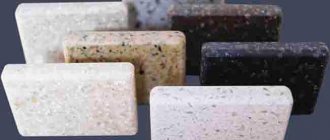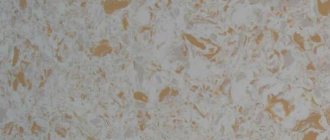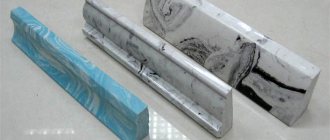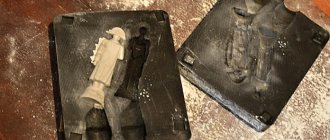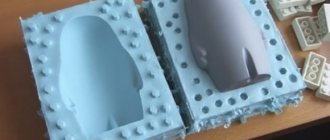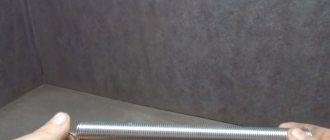Marble is considered one of the most attractive materials in terms of aesthetic and technical and operational qualities. However, the use of this stone is accompanied by difficulties in processing and transportation. And this is not to mention the high cost of natural mineral. Actually, the same situation is observed with a number of other rocks, including granite. Technology for the production of artificial analogues allows one to get rid of such shortcomings. In particular, cast marble has a more affordable price and allows you to obtain the required shape of the final product at the manufacturing stage. This can be an interior item, a purely decorative element of garden decoration, or panels for cladding. Of course, in the case of composite materials we cannot talk about complete similarity with the natural prototype, but in terms of the main characteristics, the imitation justifies itself.
What is cast marble?
This is a material that is created on a polymer base with the inclusion of fillers. The production technology itself implies wide possibilities for changing the aesthetic properties of a given stone. Compared to natural marble, the composite analogue makes it possible to use any color shades, without being limited by the size of the product. It is also worth noting the difference from the classical technology for the production of artificial stones. Unlike materials created using cement, cast marble involves the use of polymers as a binding additive. It is thanks to this technological feature that high performance properties are achieved. Among them are: solidity, moisture resistance, optimal thermal conductivity, etc.
Tips for choosing
When choosing which is better - cast marble or artificial stone, you need to focus on what product is needed and under what conditions it will be used. For example, to make an asymmetrical kitchen countertop with radial elements, you should prefer cast marble or acrylic.
For fans of classics and natural stone, quartz agglomerate will be most suitable, as it will not only exactly replicate the texture of granite, marble or malachite, but will also surpass them in performance characteristics.
For indoor stairs, especially if we are talking about a private house or a small institution, any of the options is suitable, but for rooms with high traffic, outdoor structures - only quartz agglomerate with a high level of strength.
Before making the final choice, it is worth consulting with a specialist.
Manufacturing technology
Despite providing a wide range of positive qualities, the technological process for making marble is quite simple. For this purpose, enterprises use special matrix forms in which a pre-prepared raw material base is placed. The final product is formed by casting - the container is filled with a mixture of filler and additives, which subsequently hardens. At the same time, there are several methods by which cast marble is produced. The technology in the standard scheme involves the use of polyester resins. By adding this component, the output is a product that can be used in home decoration. It is this technology that is used to produce parts and full-fledged interior objects. In practice, the peculiarity of cast marble is felt even with ordinary touch - the material gives off heat. This quality distinguishes stone from natural marble and granite.
Possible problems
It may seem that the technology for molding cast marble is simple. And indeed this is so, anyone can learn it. However, without training and practical exercises, you will not be able to master it. Often, beginners simply spoil the stone; it turns out to be shagreen (orange peel effect), porous, covered with cracks and shells. In order not to waste time on your own mistakes, do not waste money on damaged forms - study our technology and immediately begin effective and profitable work.
See also: Cast artificial stone
Return to the "Articles" section
Product molds
Much in the quality of the implementation of the technological process depends on the equipment used, the main element of which is the mentioned form, that is, the matrix. There is ready-made equipment on the market, but in most cases, manufacturers purchase matrices on special order. The fact is that molds for cast marble determine what the final product will be like. Therefore, we are not talking about standards for the execution of such equipment - each manufacturer strives to make its products unique, therefore, the sketches of the matrices are developed as copyright ones with unique sizes and textures. Another thing is that in each case high demands are placed on the material used to make the molds. Usually a composite material is used, similar in characteristics to plastic, but, of course, much stronger and more durable.
Raw materials for casting marble
In addition to the shape, such products also differ in composition. The standard set of components includes the addition of filler, polyester resin and gelcoat. The basis is the filler, which, by the way, is the most affordable component of the raw material set. Typically this component of the mixture is stone or concrete waste. As for gelcoat, it belongs to specialized additives. Thanks to this element, high strength and moisture resistance are achieved - properties that high-quality cast marble has. The production of the material also involves the addition of polyester resins. This is an important component due to which the product gains structural durability and optimal viscosity.
Why is this interesting?
Cast marble attracts consumers with its novelty. So far, on the Russian market, and even in large cities, there are not many professional production facilities producing these products. The most important thing is that the low cost of this stone allows us to produce unique exclusive products at affordable prices. Judge for yourself - one kilogram of this material costs a little more than forty rubles (at cost). So even after paying all taxes, rent, and staff salaries, the entrepreneur receives a decent profit. And thanks to our production technology, you can launch such a business in the shortest possible time.
Products based on cast marble
The flexibility of the manufacturing process allows you to diversify the shapes and sizes of the resulting products. It is for this feature that the material is valued by lovers of original design solutions. Experts identify three main areas in which manufacturers of these products operate. The first group includes materials intended for cladding: tiles, facade panels, stone boards, etc. The second group includes products made of cast marble in the form of interior accessories and furniture. These can be tabletops, flowerpots, candlesticks, kitchen surfaces and other objects. However, the greatest interest among true connoisseurs of cast marble is caused by the products used to decorate staircase structures. Manufacturers create entire series in which you can find steps, handrails, balustrades and other accessories.
Types of artificial marble for flooring
In addition to casting, there are three more types of composite marble stone:
Microcalcite
Made from crushed white marble. Among the advantages of the material are low chemical activity, strength, resistance to moisture and various radiations.
Gypsum (touchstone)
According to the name, the basis for production is gypsum. The result is a lightweight, high-strength finishing material.
Liquid (flexible) marble
Extremely elastic and lightweight. The newest and most high-tech variety. The base is acrylic polymers and marble chips. Easy to process - it can be cut with a knife/scissors. Used as wall wallpaper, for finishing various surfaces and irregularly shaped structures.
Features of industrial cast marble
This type of artificial marble is also called polymer concrete. Its peculiarity lies in the absence of decorative qualities and increased properties of vibration and chemical resistance. These characteristics determined the scope of use of the material. It is usually used in structures that require protection from physical influences. In particular, cast marble for industrial use is used in the manufacture of platforms for machines and equipment, tanks for chemical compounds, breakwaters, drainage structures, etc. It must be said that in terms of durability and impact resistance, this material is significantly superior to traditional concrete structures.
Manufacturers
Domestic enterprises are still just mastering this technology, relying on the experience of foreign companies. However, you can find quite good quality products on the market. Such manufacturers of cast marble as Sanola, Avstrom and Decorlit demonstrate a high level of technical and operational indicators of their products. Also, a rich assortment is offered by the Royal Cream Stone company, which has its own enterprises in Kazakhstan and Europe. A special feature of the offers from these manufacturers is the possibility of cooperation on individual orders, which allows you to purchase cast marble products that are unique in shape and texture.
It is also worth noting that the production of marble using casting technology is also available to private craftsmen. The purchase of raw materials constitutes a minimal share of the total cost of the product. According to some calculations, a standard size tabletop has a cost of 500-600 rubles. Of course, to manufacture it, in addition to raw materials, you will also need special equipment in the form of the same matrix. Therefore, you should count on such an enterprise only if you regularly use the technology.
Reviews of cast marble
Of course, there are different materials on the market, but in the best examples, artificial stones even surpass the characteristics of natural analogues in some respects. Owners of furniture pieces, for example, note unique color and texture solutions. Over time, the texture on surfaces does not fade even under unfavorable operating conditions. The technical and physical advantages that cast marble has are also noted. Reviews, for example, emphasize the resistance of structures to destruction processes under the influence of external factors. Most of this marble allows direct contact with water, so it can be used both in the bathroom and outdoors. In both cases, owners do not note any harmful effects on the characteristics of the material.
Disadvantages of a marble bath
The disadvantages of equipment made of artificial material should also be taken into account:
- a complicated technological production process negatively affects the cost and final price of products;
- increased wall thickness increases the weight of the finished product, which makes it difficult to transport and carry to the installation site;
- to reduce the risk of damage to surfaces, it is recommended to use special cleaning agents;
- the surface of cast marble absorbs dyes (for example, coffee or tea leaves dark stains that are difficult to remove using standard methods);
- When exposed to heated objects, destruction of the surface is possible.
High price
To manufacture sanitary equipment from artificial stone, reusable molds are required into which a pre-prepared mass is poured. To improve the quality of the product, centrifugal compaction technology is used, which requires the use of special equipment. After removing the bath, the flash and feeders are trimmed, which further increases the manufacturing cost.
Difficult care
To remove dirt deposits, special substances are used that are gentle on the protective layer on the surface of the artificial stone.
If the varnish coating is damaged, the process of mechanical wear of the stone bath accelerates; the material absorbs dyes. It is recommended to wipe the surface of the product with a soft cloth after use, removing any remaining moisture and detergents.
Do not soak or wash items made from multicolored materials in a bathtub, as the pigment will settle on damaged areas (such as scratches or nicks).
Bulky plumbing
Equipment with a complex geometric configuration is supplied in wooden formwork, which makes transportation in an elevator car difficult. To deliver the bathtub to the apartment, a ladder is used, but during the carrying process the product may be damaged. Additional difficulties arise when installing a bath: it is difficult to move the product inside the room. For example, the Armada-170 bathtub from the Aquastone company has a volume of 260 liters, the weight of the product without packaging and additional elements is 100 kg.
Weak strength
The material can withstand increased load (3 times more than natural marble), but can collapse if heated unevenly. For example, when pouring hot water, mechanical stresses arise in the body of the bathtub, causing cracks to appear. When heavy metal objects fall, chips appear on the surface of the container, and part of the side may peel off.
